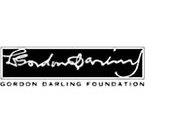Plumes and pearlshells: art of the New Guinea highlands
Rarely seen works from the Gallery's collection of Pacific art

Wiru people, Pangia, Ialibu-Pangia District, Southern Highlands Province, Female figure mid 1900s, collected by Stan Moriarty in 1967. Baruya people, Marawaka, Eastern Highlands Province, Headdress mid 1900s, collected by Stan Moriarty in 1969 © Wiru people and Baruya people respectively, under the endorsement of Pacific Island Museums Association’s Code of Ethics.
For the first time in over four decades, the Art Gallery of New South Wales is proud to present works from its little-known collection of Pacific art. Plumes and pearlshells is the first exhibition to be held in this country to focus solely upon the art of the highlands of Papua New Guinea and will offer visitors a rare opportunity to discover the extraordinary art and culture of Australia’s closest neighbour.
- Natalie Wilson, curator
Featuring works assembled by Australian collector Stanley Moriarty during his travels to the former Australian-administered territory between 1961 and 1972, the exhibition will introduce audiences to the extraordinary myriad of art forms found across the highlands region of Papua New Guinea (PNG).
The spectacular mountainous landscape of the PNG highlands is home to more than one million people whose ancestors settled in the region around 50,000 years ago. Following a dramatic population explosion in the 17th century, geographical barriers and warfare created isolation between groups. However, this also resulted in the incredible diversity of cultures and languages that can be found across the region today.
The 89 works on display include architectural elements, ritual objects, dance masks, weaponry, bilas or body adornment, and rare sculptural works depicting the human form. These works encompass multiple purposes and incorporate an incredible array of natural materials, reflecting not only the inventiveness of their makers but also a deep respect for and understanding of the environment.
Many of the works contain elements of gleaming, iridescent gold-lipped pearlshells, once the most prestigious objects highlanders could possess. An integral part of complex belief systems centering on cycles of growth and procreation, these precious treasures from the sea were considered important symbols of wealth and held great religious and ceremonial significance.
Ritual figures and dance masks, associated with fertility ceremonies, cult activities and initiation rites, radiate a strong presence. Ancient stone mortars, clubheads and other objects, some of which date back to around 6000BCE, were adopted in recent centuries as cult objects, and were believed to hold ancestral spirits and establish direct links with the spiritual world.
Equally as powerful are works that feature the plumes of the hundreds of species of birds that populate the PNG highlands, including those of the revered bird of paradise. Feathers form integral components in headbands and headdresses, dance banners, masks, human hair wigs, and certain weaponry. Highland warfare produced a wide variety of weaponry, including ornamented shields, bows and arrows, clubs and axes.
Although banned by the colonial administration in the 1950s, fighting was still prevalent in some parts of the highlands. To help promote reconciliation among warring tribes, the British tradition of the agricultural fair was established in the highlands. Today the Goroka and Mount Hagen Shows have evolved into great cultural festivals. Legions of foreign tourists are dazzled by the spectacle of thousands of highlands dancers dressed in both traditional and contemporary body adornment – a most vital form of highland art that includes necklaces of shell and bone, intricately woven armbands and loincloths, and string bags or bilum.
Many of the works collected by Moriarty, and now held by the Gallery, were objects worn or performed at these celebrated shows and reflect the ingenuity of highlands artists in their appropriation of modern materials to traditional forms.
The exhibition is supported by a 172-page, fully illustrated catalogue.
On view
30 May – 10 Aug 2014
Art Gallery of New South Wales
Art Gallery Road, The Domain, Sydney
Admission
Free
Media contact
Lisa Catt
Tel 02 9225 1791
Mob 0431 509 978
lisa.catt@ag.nsw.gov.au
